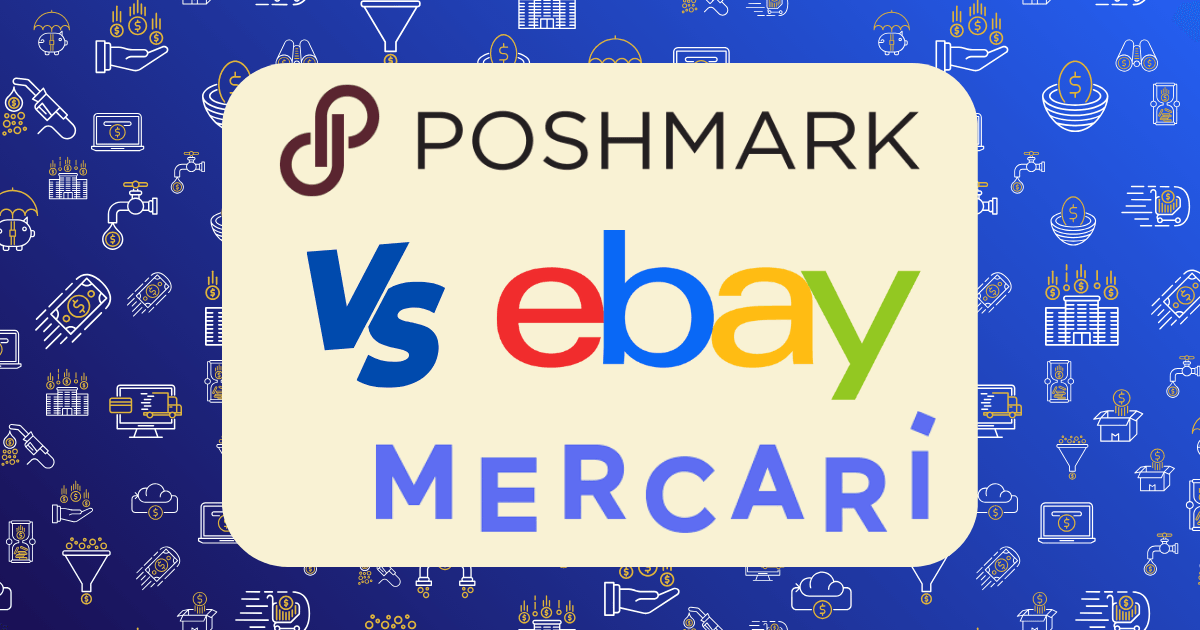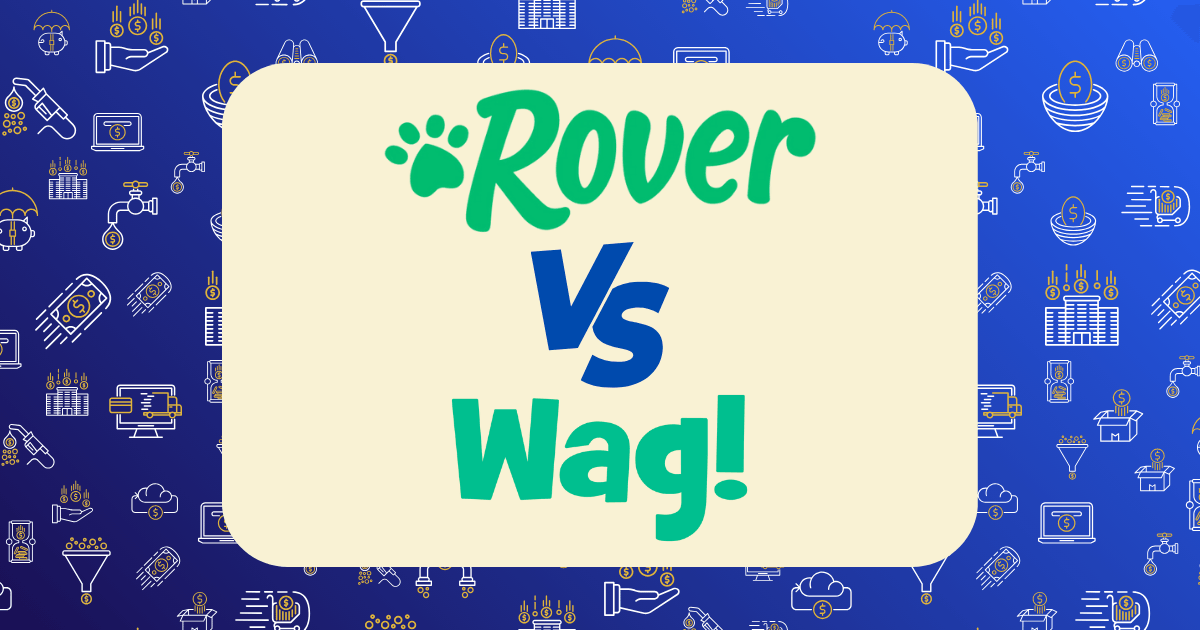Etsy Side Hustle: How My Handmade Products Generate $1,500/Month With 5 Hours of Work Weekly

Twelve months ago, I was scrolling through Etsy, admiring handmade products and thinking, “I could make that.” Like many, I dismissed the thought, assuming building a profitable Etsy shop required artistic talent I didn’t possess and time I couldn’t spare.
I was wrong on both counts.
Today, my Etsy shop generates over $1,500 in monthly profit while requiring just 5 hours of weekly maintenance. This isn’t about getting rich quick—it’s about strategically building a semi-passive income stream by leveraging systems, market research, and scalable production methods.
In this guide, I’ll share the exact blueprint I used to build my Etsy side hustle, including the mistakes that cost me hundreds in the beginning and the optimization strategies that ultimately led to success.
The Current State of Etsy: A Market Analysis
Before diving into tactics, let’s examine the market opportunity:
- Etsy connected 8 million sellers with 96 million buyers in 2024
- The platform generated $12.6 billion in sales revenue
- Active sellers increased by 15.7% in 2024, while buyers grew by 12.3%
- The global arts and crafts market reached $50.9 billion in 2024
Despite concerns about market saturation, these numbers reveal a growing marketplace with expanding opportunities. The key is positioning yourself in the right product categories with the right strategy.
My Etsy Journey: From $0 to $1,500/Month
Month 1: The Humble Beginning ($47 Revenue)
I launched with five products in the home decor niche—hand-poured concrete planters with minimalist designs. My initial investment:
- Materials: $120
- Tools: $85
- Product photography setup: $40
- Etsy listing fees: $1.00 (5 listings at $0.20 each)
- Total investment: $246
My first month yielded just 3 sales totaling $47. After materials and fees, I made a whopping $18 profit—about $1.80 per hour for my efforts.
Month 3: The Pivot Point ($312 Revenue)
After analyzing my sales data and market trends, I made three critical changes:
- Product expansion: Added complementary items (concrete coasters, bookends)
- Price optimization: Increased prices by 15% with no decrease in conversion rate
- Production efficiency: Created silicone molds to reduce creation time by 60%
These changes boosted my revenue to $312 with a $124 profit—still modest but showing clear improvement.
Month 6: The Scaling Phase ($780 Revenue)
This is where strategic thinking transformed my shop:
- Bundle creation: Offered sets that increased average order value by 40%
- Production batching: Implemented weekly batch production to reduce per-item time
- Shipping optimization: Switched to integrated shipping, saving $1.75 per order
Revenue climbed to $780 with $390 profit while my time investment remained stable at 10 hours weekly.
Month 12: The Optimization Phase ($1,500+ Profit)
By my twelfth month, I had refined my system to near-perfection:
- Product line curation: Eliminated low-margin products, focused on high-performers
- Partial outsourcing: Hired part-time help for packaging and shipping
- Automated marketing: Implemented email sequences for repeat customers
- Inventory forecasting: Developed a system to predict demand and prepare inventory
The result? $3,200 in monthly revenue with $1,500+ in profit while working just 5 hours weekly on management and new product development.
The 5-Hour Work Week: Breaking Down My Current Schedule
Many Etsy sellers burn out because they become slaves to their shops. Here’s how I’ve structured my workflow to maintain profitability while preserving my time:
Monday: Production Planning (1 hour)
- Review weekend orders and inventory levels
- Plan weekly production quantities
- Order supplies as needed
- Prepare production templates for assistant
Wednesday: Quality Control & New Development (2 hours)
- Inspect finished products before shipping
- Photograph new items
- Update listings and optimize SEO
- Analyze shop statistics and adjust strategy
Friday: Packaging & Shipping Prep (1 hour)
- Final quality check on outgoing orders
- Prepare shipping labels and packing materials
- Brief assistant on special handling instructions
- Address any customer service issues
Sunday: Financial Review & Strategy (1 hour)
- Analyze weekly sales and profit margins
- Review advertising performance
- Plan promotional activities for coming week
- Research market trends and competitor offerings
This schedule allows me to maintain quality control and strategic direction while outsourcing the most time-consuming elements of production and fulfillment.
The Product Strategy: What Actually Sells on Etsy
After testing dozens of products across multiple categories, I’ve identified these key principles for selecting profitable items:
1. The “Unique But Familiar” Framework
The most successful products occupy a sweet spot between uniqueness and familiarity. They should be different enough to stand out but familiar enough that customers understand their purpose.
My best-selling item—a set of geometric concrete planters with gold accents—follows this principle. The concrete construction is unique, but the functionality is immediately recognizable.
2. The Price-to-Effort Ratio
Calculate this for every product:
(Selling Price – Material Cost) ÷ Production Minutes = Value Per Minute
I aim for a minimum of $0.75 per minute. Products below this threshold either get price increases or are eliminated.
3. The Shipping Weight Factor
Heavy items kill profits through shipping costs. I learned this the hard way with my initial large planters. Now I focus on items under 2 pounds when possible, or price heavier items with sufficient margin to absorb shipping costs.
4. The Gift Potential Index
Products frequently purchased as gifts generate more consistent sales throughout the year. I evaluate each product’s “gift potential” on a scale of 1-10 and prioritize those scoring 7+.
5. The Seasonal Diversification Strategy
To maintain consistent income, I’ve developed product lines for different seasons:
- Spring/Summer: Planters, garden accessories
- Fall: Home decor items in autumn colors
- Winter: Holiday-themed decor and gift sets
This approach prevents the dramatic revenue fluctuations that plague many Etsy sellers.
The Production System: Scaling Without Sacrificing Quality
The biggest challenge for handmade sellers is scaling production without becoming overwhelmed. Here’s my system:
1. Templatized Creation Process
Every product has a detailed production document including:
- Exact measurements and material quantities
- Step-by-step production photos
- Common issues and solutions
- Quality control checkpoints
This allows for consistent quality and easier delegation.
2. Batch Production Methodology
Instead of making products one at a time, I batch similar processes:
- Mix all concrete at once
- Pour multiple molds in sequence
- Sand all items from the previous batch
- Apply finishes to multiple pieces simultaneously
This approach reduced my per-item production time by 40%.
3. Strategic Inventory Management
I maintain a “minimum viable inventory” based on historical sales data:
Average Weekly Sales × 3 = Base Inventory Level
This ensures I can fulfill orders promptly without excessive capital tied up in inventory.
4. Partial Outsourcing Framework
I’ve identified which tasks benefit most from outsourcing:
- Packaging and shipping (low skill, time-consuming)
- Basic finishing work (moderate skill, repetitive)
- Photography assistance (technical but teachable)
Tasks I keep for myself:
- Final quality control
- New product development
- Customer service for complex issues
- Strategic decision-making
This division maintains quality while freeing my time for high-value activities.
The Marketing Strategy: Beyond “Post and Pray”
Many Etsy sellers rely solely on the platform’s search algorithm. My approach combines platform optimization with external marketing:
1. Etsy SEO Optimization
My listing optimization framework includes:
- Primary keyword in title beginning
- Secondary keywords in title end
- Long-tail keywords in tags
- Benefit-focused descriptions with searchable terms
- Attributes fully completed for search filtering
This approach increased my search visibility by 215% over six months.
2. Strategic Photography
Product photography dramatically impacts conversion rates. My framework includes:
- Lifestyle shots showing products in use
- Scale reference images with common objects
- Detail shots highlighting craftsmanship
- Process photos building authenticity
- Consistent styling across all listings
Implementing this system increased my conversion rate from 1.8% to 3.2%.
3. Pinterest Marketing Funnel
Pinterest drives 35% of my external traffic. My approach:
- Create “idea pins” showcasing products in stylish settings
- Develop seasonal boards aligned with current inventory
- Pin consistently (5-7 pins weekly) using a scheduling tool
- Focus on high-performing Pinterest categories (home decor, DIY, gifts)
This strategy generates approximately 400 monthly shop visits with minimal ongoing effort.
4. Email Nurturing System
I collect email addresses through package inserts offering a discount on future purchases. My automated sequence includes:
- Welcome email with shop story and discount (45% open rate)
- Product care tips 7 days later (38% open rate)
- Complementary product suggestions 21 days later (32% open rate)
- Seasonal promotions quarterly (29% open rate)
This system generates 22% of my repeat business with almost no active management.
Financial Management: The Often-Overlooked Success Factor
Proper financial management separates sustainable businesses from expensive hobbies. Here’s my approach:
1. True Profit Calculation
I calculate true profit using this formula:
Revenue – (Materials + Shipping + Etsy Fees + Overhead + Labor) = True Profit
Many sellers forget to include their own labor, leading to an inflated sense of profitability.
2. Pricing Strategy
My pricing formula:
(Material Cost + Labor Cost) × 3 + Shipping = Retail Price
This 3× multiplier ensures sufficient margin to cover platform fees, marketing costs, and business growth.
3. Tax Efficiency
As an Etsy seller, I’m classified as a sole proprietor. I maximize tax efficiency by:
- Tracking all business expenses meticulously
- Taking the home office deduction
- Deducting mileage for supply runs and post office trips
- Setting aside 25-30% of profit for quarterly estimated taxes
Proper tax planning increased my effective profit by approximately 15%.
4. Reinvestment Strategy
I follow the 50/30/20 rule for profits:
- 50% personal income
- 30% business reinvestment (better tools, new product development)
- 20% emergency fund/future expansion
This balanced approach supports both current income needs and long-term business growth.
Common Pitfalls and How I Avoided Them
My journey wasn’t without mistakes. Here are the biggest pitfalls I encountered and how I overcame them:
1. The Perfectionism Trap
Early on, I spent hours perfecting each item, making my hourly rate abysmal. I learned to define “acceptable quality standards” and work efficiently to meet them without obsessing over imperceptible details.
2. The Pricing Paralysis
I initially underpriced my products significantly. After calculating my actual hourly rate ($3.75/hour in the beginning), I realized I needed to charge more. Surprisingly, higher prices actually increased perceived value and sales.
3. The Inventory Overload
I once created 50 planters based on a single good sales week, tying up capital and storage space. Now I use the “minimum viable inventory” system mentioned earlier, adjusting production based on 3-month sales trends rather than short-term spikes.
4. The Platform Dependency
Relying solely on Etsy’s algorithm left me vulnerable to search changes. Developing external traffic sources (Pinterest, Instagram, email) created stability and reduced platform dependency.
5. The Burnout Spiral
In months 4-5, I nearly quit after working 25+ hours weekly on top of my full-time job. Implementing systems, batching production, and selective outsourcing restored balance while increasing profitability.
Is This Model Sustainable in 2025 and Beyond?
Despite increased competition, the Etsy handmade market continues growing. However, success requires adaptation to these emerging trends:
- Sustainability focus: Eco-friendly materials and production methods are increasingly valued by consumers
- Personalization demand: Custom and personalized items command premium prices and face less competition
- Production efficiency: Sellers who develop systems for efficient creation will maintain profitability
- Multi-channel presence: Reducing dependency on any single platform provides stability
- Community building: Sellers who develop direct relationships with customers gain resilience against platform changes
By embracing these trends, my business model remains viable despite increasing competition.
Your Action Plan: Getting Started in 30 Days
Ready to build your own Etsy side hustle? Here’s your 30-day roadmap:
Days 1-7: Research & Planning
- Research top-performing products in 3-5 categories that interest you
- Analyze competition, pricing, and review patterns
- Identify 2-3 product types with favorable price-to-effort ratios
- Create a basic business plan with startup costs and sales projections
Days 8-14: Product Development
- Create 3-5 prototype products
- Develop production systems and documentation
- Establish quality standards and testing procedures
- Source materials from wholesale suppliers when possible
Days 15-21: Shop Setup
- Create your Etsy shop with complete profile information
- Photograph products professionally (natural light, clean backgrounds)
- Write SEO-optimized listings using competitor research
- Set up shipping profiles and policies
Days 22-30: Launch & Learn
- Publish your initial listings
- Implement a simple marketing plan (social shares, friends/family)
- Track key metrics (views, favorites, conversion rate)
- Gather initial customer feedback and make adjustments
Remember that success on Etsy isn’t immediate—it’s the result of consistent improvement and strategic adaptation.
Final Thoughts: The True Value of an Etsy Side Hustle
Beyond the $1,500 monthly income, my Etsy business has provided unexpected benefits:
- Skill development: I’ve gained marketing, photography, and business management skills applicable to many ventures
- Creative fulfillment: Creating physical products provides satisfaction rarely found in digital work
- Business ownership: The experience of building systems and solving problems has prepared me for larger entrepreneurial pursuits
- Financial confidence: Having a reliable secondary income stream reduces financial stress and enables greater risk-taking in my career
Whether you’re looking to generate side income, test entrepreneurial waters, or eventually replace your full-time job, an Etsy handmade business offers a low-risk entry point with significant potential rewards.
Have you tried selling on Etsy or other handmade marketplaces? What strategies have worked for you? Share your experiences in the comments below!







